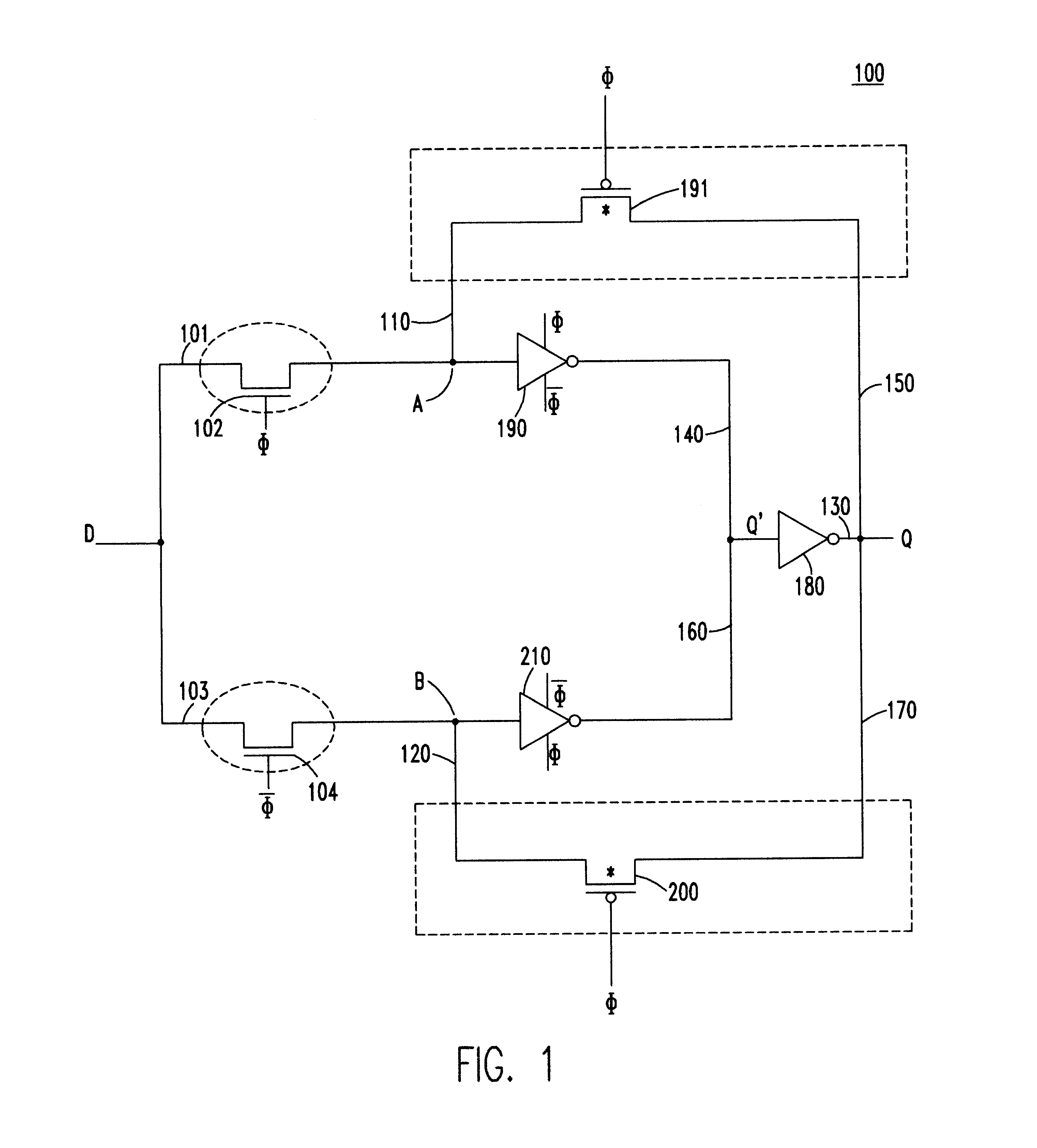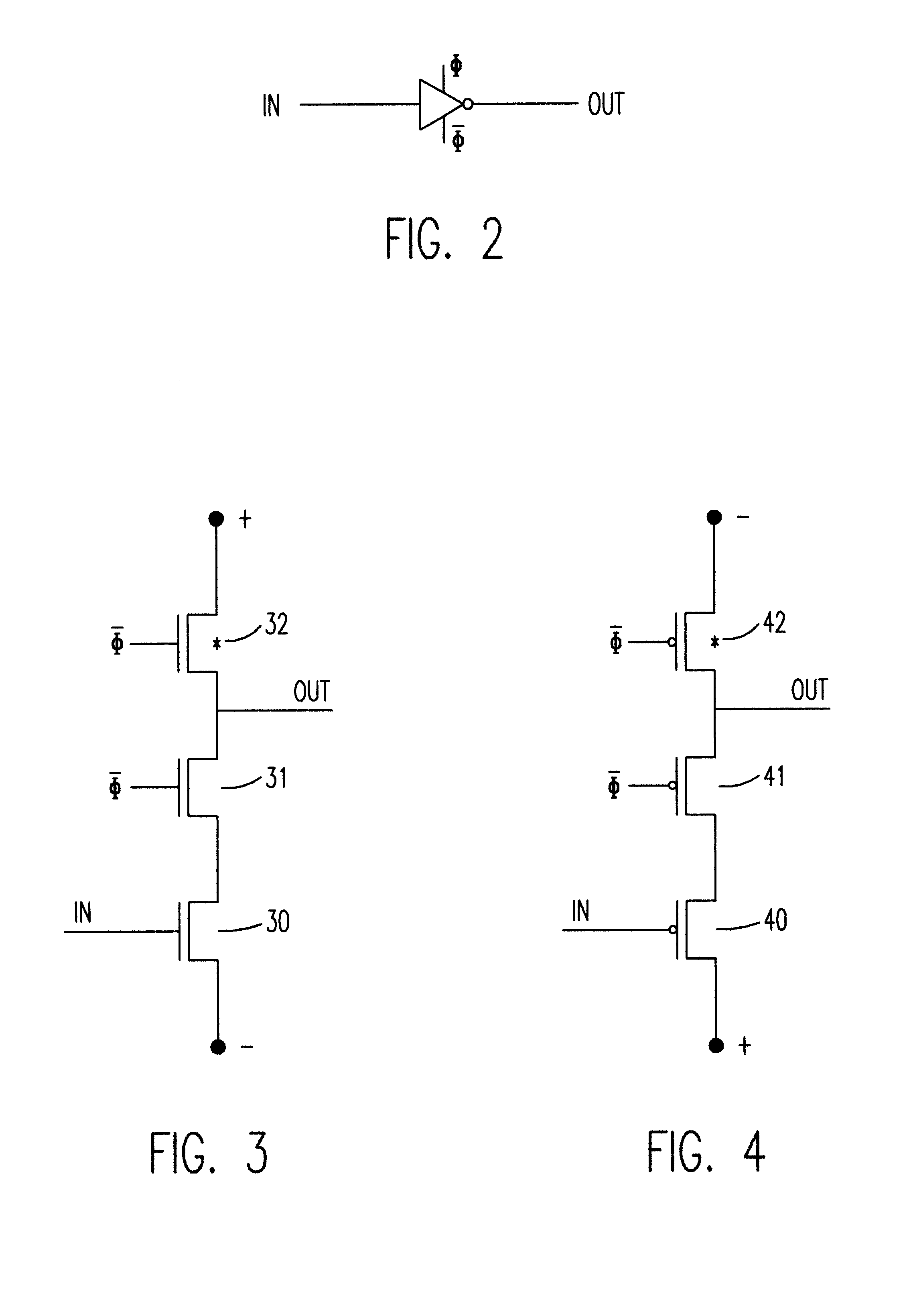Reduced-transistor, double-edged-triggered, static flip flop
a flip-flop, double-edged trigger technology, applied in the field of static flip-flops, can solve the problems of inefficient data flow, set flip-flop operating power cost, slow data flow,
- Summary
- Abstract
- Description
- Claims
- Application Information
AI Technical Summary
Benefits of technology
Problems solved by technology
Method used
Image
Examples
Embodiment Construction
Referring to FIG. 1, a first embodiment of a static, double-edge-triggered flip-flop 100 in accordance with the present invention includes an upper data path and a lower data path connected between a data input node D and an output terminal Q. The upper data path 101 includes a pass transistor 102 connected to a first data loop 110, and the lower data path 103 includes a pass transistor 104 connected to a second data loop 120.
The first and second data loops are each formed from three paths. The first path is a forward path 130 which is shared by both loops and extends between node Q' and node Q. Shared path 130 includes an inverter 180 for performing a data inversion function. As will be explained in greater detail, the upper and lower paths are constructed to operate in accordance with different clock signals, which preferably are non-inverted and inverted clock signals .phi. and .phi.. When these signals are derived from the same clock, the flip-flop of present invention advantage...
PUM
 Login to View More
Login to View More Abstract
Description
Claims
Application Information
 Login to View More
Login to View More - R&D
- Intellectual Property
- Life Sciences
- Materials
- Tech Scout
- Unparalleled Data Quality
- Higher Quality Content
- 60% Fewer Hallucinations
Browse by: Latest US Patents, China's latest patents, Technical Efficacy Thesaurus, Application Domain, Technology Topic, Popular Technical Reports.
© 2025 PatSnap. All rights reserved.Legal|Privacy policy|Modern Slavery Act Transparency Statement|Sitemap|About US| Contact US: help@patsnap.com



